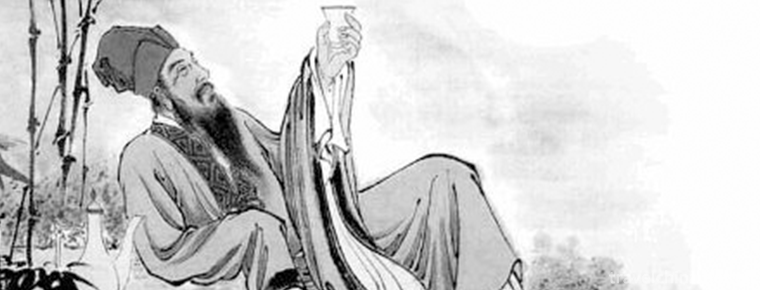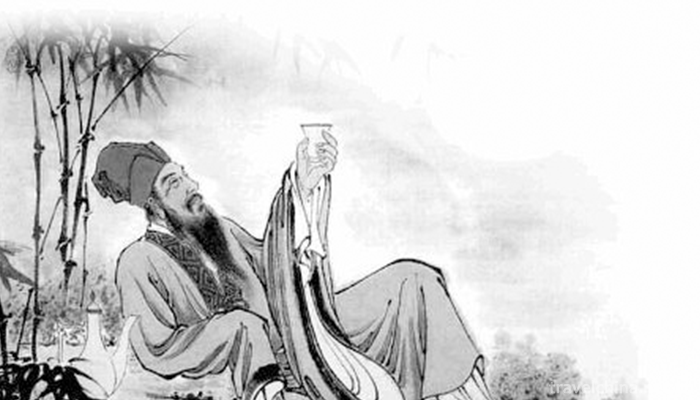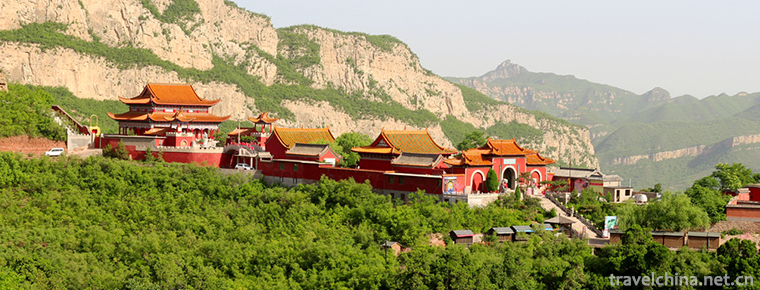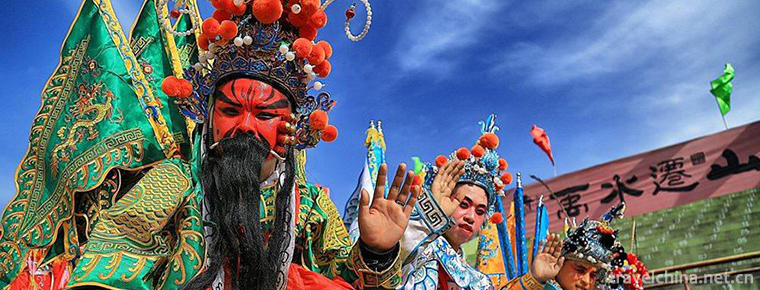2019-01-04

- By ChinaWiki.net
- Chinese Edition
- 2019-06-16
Legend of Su Dongpo
The legend of Su Dongpo is a group of traditional folklore stories evolved from the story of Su Shi, a great writer in the Northern Song Dynasty.
On May 23, 2011, "Legend of Su Dongpo" (Hangzhou) was selected as "the third batch of national intangible cultural heritage list".
On July 16, 2014, "The Legend of Su Dongpo" (Huanggang) was selected as "the fourth batch of national intangible cultural heritage list".
On January 14, 2016, "Legend of Su Dongpo" (Changzhou) was selected as "the fourth batch of intangible cultural heritage list of Jiangsu Province".
Historical Origin
Su Shi is knowledgeable and versatile, and has a high attainment in calligraphy, painting, poetry and prose; he is bold in character, clear in appearance, and good at conduct. Although he has suffered a lot of political hardships in his life, he always holds a broad-minded outlook on life; he sympathizes with the people, cares about production, and earnestly makes promises for the local people during his official career. What a good thing. Out of his love for Su Dongpo, many legends about him have been spread among the local people.
Hangzhou Edition
The legends of Su Dongpo spread widely. In the census of "Integration of Chinese Folk Stories", Zhejiang, Jiangsu, Jiangxi, Hebei, Shandong, Shaanxi, Hubei, Sichuan, Guangdong, Hainan and other provincial volumes were included. Among them, the legends of Su Dongpo in Hangzhou are the most numerous and outstanding. Su Dongpo served as an official in Hangzhou twice. He was appointed as a general judge for the first time and as a Zhizhou for the second time. It lasted for five years. A lot of legends were left here. The legends he left behind during his stay in Hangzhou are unforgettable, reflecting the local scenery. Dong Xuechang's Legend of Su Dongpo in Hangzhou has collected 56 legends of Su Dongpo which are still circulating in the contemporary era. In Hangzhou, Su Dongpo is also known as a gourmet. People also use Dongpo meat as a souvenir.
Huanggang Edition
Huangzhou, an ancient city, is famous all over the world for its East slope. Huangzhou is an important time for Su Shi. Here, his mentality is further refined until broad-minded. Here, his literary attainment reached its peak. Just as Yu Qiuyu said in "Su Dongpo Breakthrough", Su Dongpo completed Huangzhou, and Huangzhou also completed Su Dongpo.
In his spare time, he led his family to reclaim a sloping land in the east of the city, planting fields to support their livelihoods. The nickname of "Dongpo Gushi" came from this time.
It is said that Su Dongpo made "Dongpo meat" in Xuzhou, Huangzhou and Hangzhou. When he was in Zhizhou, Xuzhou, he led the people to fight floods and build embankments to protect the city. People slaughtered pigs and sheep in succession and went to the palace for comfort. Dongpo refused to take them off. After receiving them, he personally instructed his family to cook red-roasted meat and gave it back to the people. After eating, we all feel that this meat is fat but not greasy, crisp and delicious, and we all call it "donated meat".
On February 1, 1080, the third year of Yuanfeng, Su Shi was banished to Huangzhou. When he saw that pork noodles in Huangzhou were cheap, people did not eat it very much, so they cooked pork in person. On one occasion, when he had a good appetite for food, he improvised a poem called Pork Poetry, in which he wrote: "Good pork in Huangzhou is as cheap as dung. Rich people refuse to eat, poor people do not boil. Slow fire, little water, when the fire is full, it is beautiful. Come early every day to make a bowl and be satisfied with it. When the poem was passed down ten times and ten times, people began to imitate it and dubbed it "Dongpo Pork".
When Su Dongpo was two Hangzhou governor, she organized the workers to dredge West Lake and build a bridge. The West Lake was restored to its former beauty by the half of the grass *. The people in Hangzhou thanked him very much. When Su Dongpo received it, he instructed his family to cut the meat into cubes and cook it red, crisp, mellow and fragrant to give it to the migrant workers who participated in dredging the West Lake. Everyone praised and praised it after eating, so the name of "Dongpo meat" spread throughout China.
Huangzhou, an ancient city, is famous all over the world for its East slope. Huangzhou is an important time for Su Shi. Here, his mentality is further refined until broad-minded. Here, his literary attainment reached its peak. Just as Yu Qiuyu said in "Su Dongpo Breakthrough", Su Dongpo completed Huangzhou, and Huangzhou also completed Su Dongpo.
Changzhou Edition
Recently, 15 intangible cultural heritage projects in Changzhou have been approved as the fourth batch of intangible cultural heritage projects in Jiangsu Province by the people's government of Jiangsu Province. Among them, the "Legend of Su Dongpo" declared by Tianning Cultural Museum of Changzhou City and the "Legend of Su Dongpo" by Changzhou Celebrity Research Association as a successor unit has been successfully selected, numbered JSI-38.
Su Dongpo, a great scholar in the Northern Song Dynasty, had an indissoluble bond with Changzhou. He was deeply attached to Changzhou, which is famous for its outstanding people and rich people. When he was 21 years old, he met more than 10 Changzhou fellow scholars and made a "covenant of chicken and millet" with Shanxi. In his later 40 years of life, he had visited Changzhou more than 10 times, and twice went to court to beg for residence in Changzhou, and served as Deputy Ambassador of Changzhou League Training. In his later years, he settled down after the return of Hainan amnesty and eventually aged in Changzhou. After Su Dongpo's death, his eldest son Sumai and his youngest son Su's descendants settled in Changzhou. Changzhou, as the oldest and second hometown of Su Dongpo, has left behind many beautiful and moving legends besides many relics. For thousands of years, these legends and stories have been handed down orally among Changzhou people and become an important part of Changzhou celebrity culture.
Since its establishment in 1995, the Changzhou Celebrity Research Association has devoted itself to the academic research of Changzhou Celebrities, especially focusing on the collection, collation and protection of Su Dongpo's legends. It has published books such as "Dongpo Changzhou Margin" and "Su Dongpo Changzhou Legend Story", and has produced audio-visual documentaries of "Su Dongpo Legend". It also succeeded in the old Fujihua Museum of Su Dongpo's Old Land in August 2011. An exhibition of collections of famous calligraphers and paintings commemorating the 910th anniversary of Xian's death in Changzhou, Su Dongpo, was held with remarkable achievements and attracted wide attention throughout the country.
After the "Legend of Su Dongpo" was announced as a non-heritage project in Jiangsu Province, the Cultural Museum of Tianning District of Changzhou City and the Changzhou Celebrity Research Association will further strengthen academic research, make efforts to protect the non-heritage, and do a good job of basic work for the application of the "Legend of Su Dongpo" for the national intangible cultural heritage project.
Inheritance Significance
As a unique cultural phenomenon, the legend of Su Dongpo is deeply engraved in the hearts of the working people. It has been closely integrated with the culture of Hangzhou and has become an integral part of the cultural tradition.

Ask a Question
Your email address will not be published.



0 Questions